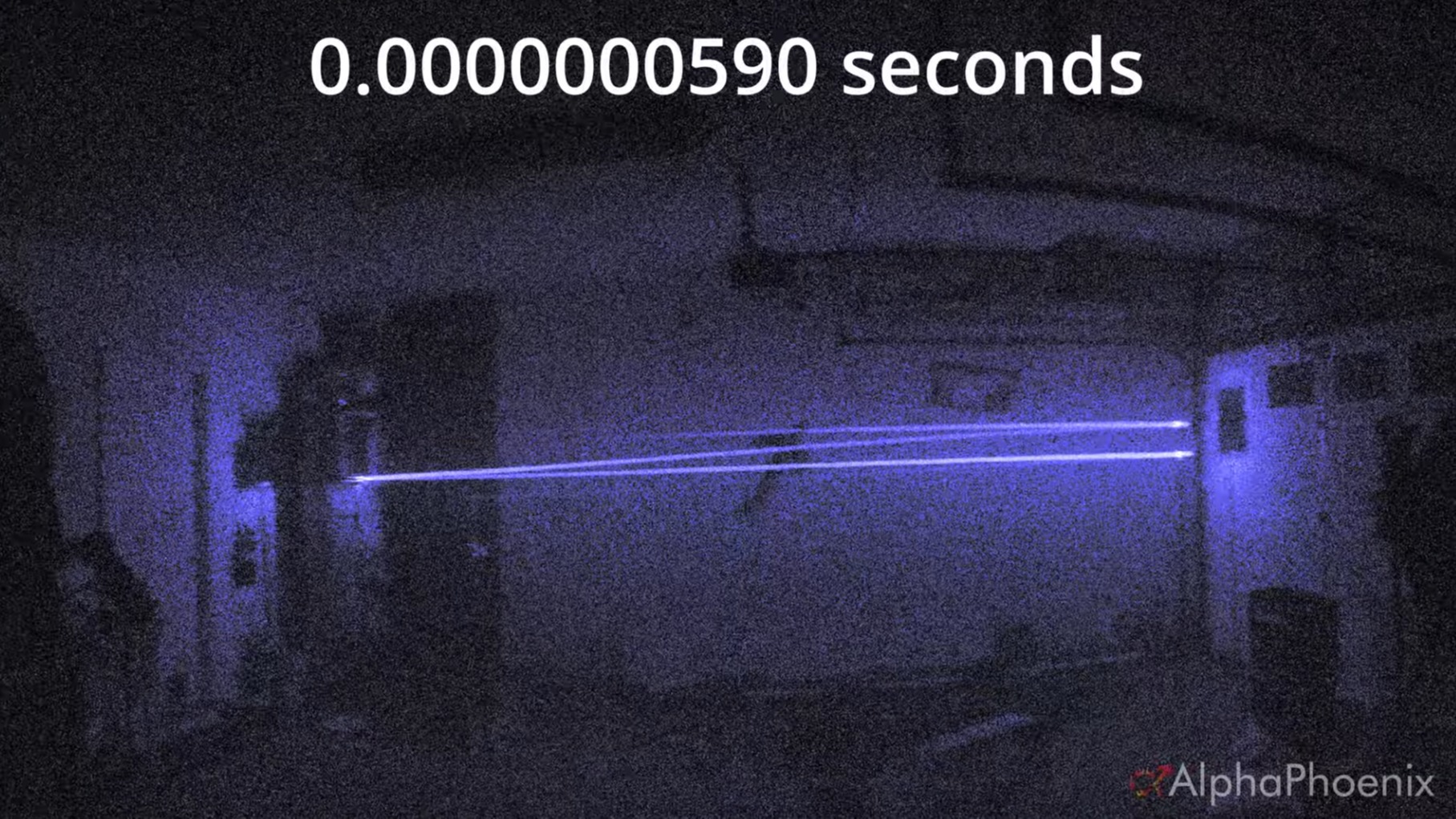Science
Innovator Captures Light Speed with 2 Billion FPS Camera

A groundbreaking achievement in high-speed photography has emerged from the garage of innovator Brian Haidet. He has successfully recorded a laser beam at an astonishing 2 billion frames per second, effectively visualizing the speed of light in a novel way. While the video itself is a one pixel by one pixel representation, Haidet cleverly repeats this image multiple times to create a full rendering, captivating viewers with its scientific implications.
In December 2022, Haidet had already set a record with a camera capable of capturing at 1 million frames per second. This latest project, however, required a complete overhaul of his original apparatus. To achieve this leap in frame rate, he updated nearly every component, including the motors, hardware, oscilloscope, signaling, recording software, and processing software. This comprehensive redesign was necessary to reach the new benchmark while also enhancing resolution.
The Science Behind the Speed
One of the most intriguing results from this setup is the apparent difference in how light travels toward and away from the camera. When laser beams reflect off fog particles closer to the camera, they seem to arrive sooner than beams bouncing back from further distances. This phenomenon serves as a visual representation of special relativity, demonstrating how light interacts with various distances—an effect that Haidet has managed to capture in a home experiment.
The experiment not only showcases Haidet’s technical skills but also illustrates the potential of high-speed imaging in scientific exploration. Capturing events at 2 billion fps opens doors to a greater understanding of physical phenomena, particularly in fields like physics and engineering.
For those interested in delving deeper into Haidet’s innovative methods, additional materials are available that explore the technical aspects of his experiment in greater detail. His work not only highlights the advancements in high-speed imaging technology but also provides a fresh perspective on the nature of light and its behavior.
Through this project, Haidet has not only pushed the boundaries of what is possible in photography but has also made significant contributions to the ongoing conversation about light and relativity. The implications of his findings could resonate beyond his garage, potentially influencing future research in various scientific disciplines.
-

 Health4 days ago
Health4 days agoRare Brain Condition Discovered More Common in New Mexico
-

 Politics5 days ago
Politics5 days agoPrince Andrew Steps Back from Royal Duties Following Epstein Memoir
-

 Health5 days ago
Health5 days agoRemembering Mary Ingleby: A Life of Love, Teaching, and Music
-

 Sports5 days ago
Sports5 days agoMLS Decision Day 2025: Playoff Spots on the Line as Teams Clash
-

 Science5 days ago
Science5 days agoIdaho State University Launches Haunted Science Laboratory on Oct. 25
-

 World5 days ago
World5 days agoYoung Driver Dies in Collision with Box Truck in El Cajon
-

 Lifestyle5 days ago
Lifestyle5 days agoKent Hamilton Named Southeastern Farmer of the Year at Expo
-

 Business5 days ago
Business5 days agoFirst National Bank of Groton’s Quiet Period Ends October 21
-

 Entertainment5 days ago
Entertainment5 days agoTrump Commutes George Santos’ Sentence, Sparks Controversy
-

 Politics5 days ago
Politics5 days agoNavy Veteran Max Quattromani Launches Campaign for Assessor Seat
-

 Sports5 days ago
Sports5 days agoSaquon Barkley Reacts to James Franklin’s Dismissal from Penn State
-

 Health5 days ago
Health5 days agoFDA Introduces First Nine Recipients of National Priority Vouchers









